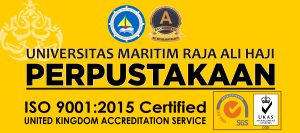The Analysis of the Internal Control System in the Government of Tanjungpinang City: A Case Study of the 2024 Integrity Assessment Survey by the Indonesian Corruption Eradication Commission (KPK)
DOI:
https://doi.org/10.31629/xayka778Keywords:
internal control system, integrity assessment survey, corruption prevention, local governance, Tanjungpinang City, KPK.Abstract
This study examines the effectiveness of the internal control system within the Government of Tanjungpinang City using data from the 2024 Integrity Assessment Survey (SPI) conducted by Indonesia’s Corruption Eradication Commission (KPK). The research aims to determine how internal control mechanisms enhance organizational integrity and mitigate corruption risks in local governance. Employing a descriptive–quantitative approach based on secondary SPI data, the analysis applies the five core components of internal control outlined in Government Regulation No. 60/2008: control environment, risk assessment, control activities, information and communication, and monitoring. Statistical and content analyses assess the maturity level of the internal control system and its alignment with KPK’s integrity dimensions.
The findings indicate that Tanjungpinang City’s internal control system is at a developing maturity stage, with major weaknesses in leadership commitment, ethical culture, and risk-based monitoring. Despite improvements in transparency and compliance through digital systems, preventive control mechanisms remain limited. The results also show a strong positive relationship between robust internal controls and higher integrity scores, underscoring that strengthening control mechanisms directly promotes institutional integrity.
This study emphasizes the importance of integrating risk management into internal control processes, reinforcing ethical leadership, and enhancing the role of internal auditors (APIP) through competency-based training and digital audit tools. These initiatives are crucial for fostering proactive, integrity-oriented local governance. By empirically linking internal control effectiveness with KPK’s SPI framework, this research contributes novel evidence that internal control maturity serves as a predictive indicator of institutional integrity in Indonesia’s public sector
Downloads
References
Aldridge, R., & Colbert, J. (1994). Management’s report on internal control, and the accountant’s response. Managerial Auditing Journal, 9(7), 21–28. https://doi.org/10.1108/02686909410067504
Arens, A. A., Elder, R. J., & Beasley, M. S. (2023). Auditing and assurance services: An integrated approach (18th ed.). Pearson Education.
Badan Pengawasan Keuangan dan Pembangunan (BPKP). (2019). Pedoman Penilaian Maturitas Penyelenggaraan Sistem Pengendalian Intern Pemerintah (SPIP). Jakarta: BPKP.
Badan Pengawasan Keuangan dan Pembangunan (BPKP). (2022). Laporan Hasil Evaluasi Maturitas SPIP Nasional Tahun 2022. Jakarta: BPKP.
Committee of Sponsoring Organizations of the Treadway Commission (COSO). (2013). Internal Control — Integrated Framework. COSO.
Committee of Sponsoring Organizations of the Treadway Commission (COSO). (2017). Enterprise Risk Management: Integrating with Strategy and Performance. COSO.
Davis, J. H., Schoorman, F. D., & Donaldson, L. (1997). Toward a stewardship theory of management. Academy of Management Review, 22(1), 20–47. https://doi.org/10.2307/259223
Ghazali, N. A. M., & Manab, N. A. (2019). Internal control, risk management and governance: A conceptual analysis. Asian Journal of Accounting and Governance, 12, 27–39. https://doi.org/10.17576/AJAG-2019-12-03
Hayes, R., Wallage, P., & Gortemaker, H. (2021). Principles of auditing: An introduction to international standards on auditing (4th ed.). Pearson Education.
Husain, A., & Pratama, A. (2021). Evaluating internal control effectiveness in public sector organizations: Evidence from Indonesia. Journal of Accounting and Public Policy, 40(3), 106–125. https://doi.org/10.1016/j.jaccpubpol.2020.106825
Institute of Internal Auditors (IIA). (2020). International Professional Practices Framework (IPPF): The Standards. The IIA Research Foundation.
Kementerian Pendayagunaan Aparatur Negara dan Reformasi Birokrasi (KemenPANRB). (2023). Laporan Evaluasi Zona Integritas Menuju WBK/WBBM Tahun 2023. Jakarta: KemenPANRB.
Komisi Pemberantasan Korupsi (KPK). (2024). Laporan Hasil Survei Penilaian Integritas (SPI) Tahun 2024. Jakarta: Direktorat Pendidikan dan Pelayanan Masyarakat KPK.
Lakis, V., & Giriūnas, L. (2012). The concept of internal control system: Theoretical aspect. Economics and Management, 17(1), 366–373. https://doi.org/10.5755/j01.em.17.1.2257
Mihret, D. G., & Yismaw, A. W. (2007). Internal audit effectiveness: An Ethiopian public sector case study. Managerial Auditing Journal, 22(5), 470–484. https://doi.org/10.1108/02686900710750757
Organisation for Economic Co-operation and Development (OECD). (2020). Public integrity handbook. OECD Publishing. https://doi.org/10.1787/ac8ed8e8-en
Peraturan Pemerintah Republik Indonesia Nomor 60 Tahun 2008 tentang Sistem Pengendalian Intern Pemerintah.
Rae, K., Sands, J., & Subramaniam, N. (2017). Associations among the five components within COSO internal control-integrated framework as the underpinning of quality corporate governance. Australasian Accounting, Business and Finance Journal, 11(1), 28–54. https://doi.org/10.14453/aabfj.v11i1.4
Sari, D. P., & Hidayat, R. (2022). Pengaruh sistem pengendalian internal terhadap pencegahan korupsi di sektor publik: Studi pada pemerintah daerah di Indonesia. Jurnal Akuntansi dan Keuangan Indonesia, 19(2), 150–169. https://doi.org/10.21002/jaki.2022.09
Tugiman, H. (2019). Membangun sistem pengendalian intern pemerintah (SPIP) yang efektif. Jakarta: BPKP Press.
Downloads
Published
Issue
Section
URN
License
Copyright (c) 2025 Jurnal Ilmiah Akuntansi dan Finansial Indonesia

This work is licensed under a Creative Commons Attribution-NonCommercial 4.0 International License.








